
22 minute read
Flooring solutions
The food and beverage manufacturing industry of Australia is a high-standard, face-paced industry with little room for error. Downtime is scheduled months in advance, and adherence to shutdown periods is vital. The last thing a maintenance manager wants to hear is that a maintenance project will need to be completed again just three months after completion due to non-compliance.
Understanding available flooring solutions for individual areas in a food or beverage manufacturing facility can significantly boost the success of a project for the maintenance manager.
Let’s first cover off on the three main challenges that need to be considered prior to selecting a flooring solution.
1. Constant wet conditions
Food and beverage manufacturing facility floors are under constant stress due to the water used in frequent washdowns, cleaning routines and liquids from the food production. If the incorrect flooring solution has been installed, it creates a couple of issues: slip hazards, pooling of liquids (if falls have been done incorrectly) and corrosion of the floor.
2. Temperature extremes
peratures below zero. With two extreme temperatures, if the incorrect flooring solution has been applied, the concrete will gradually crack under the pressure and expose bare substrate.
3. Corrosion
With the high amount of acids and alkalis involved in cleaning routines, as well as the food production process, corrosion can occur if the incorrect flooring solution has been applied.
Now we’ve briefly covered off on the challenges, we’ll review the options. Unfortunately, the ANZ Food Standards Code gives us little guidance as to the ideal flooring solutions. At Allied Finishes, we can only provide advice based on flooring solutions that comply with the following:
As set out in the ANZ Food Standards Code Standard 3.2.3, flooring must be designed and constructed in such a way that is appropriate for the activities conducted on the food premises. More specifically, floors must: • be able to be effectively cleaned; • be unable to absorb grease, food particles or water; • be laid so there is no ponding of water; and • to the extent that is practicable, be unable to provide harbourage for pests.
© Stock.Adobe.com/au/DedMityay
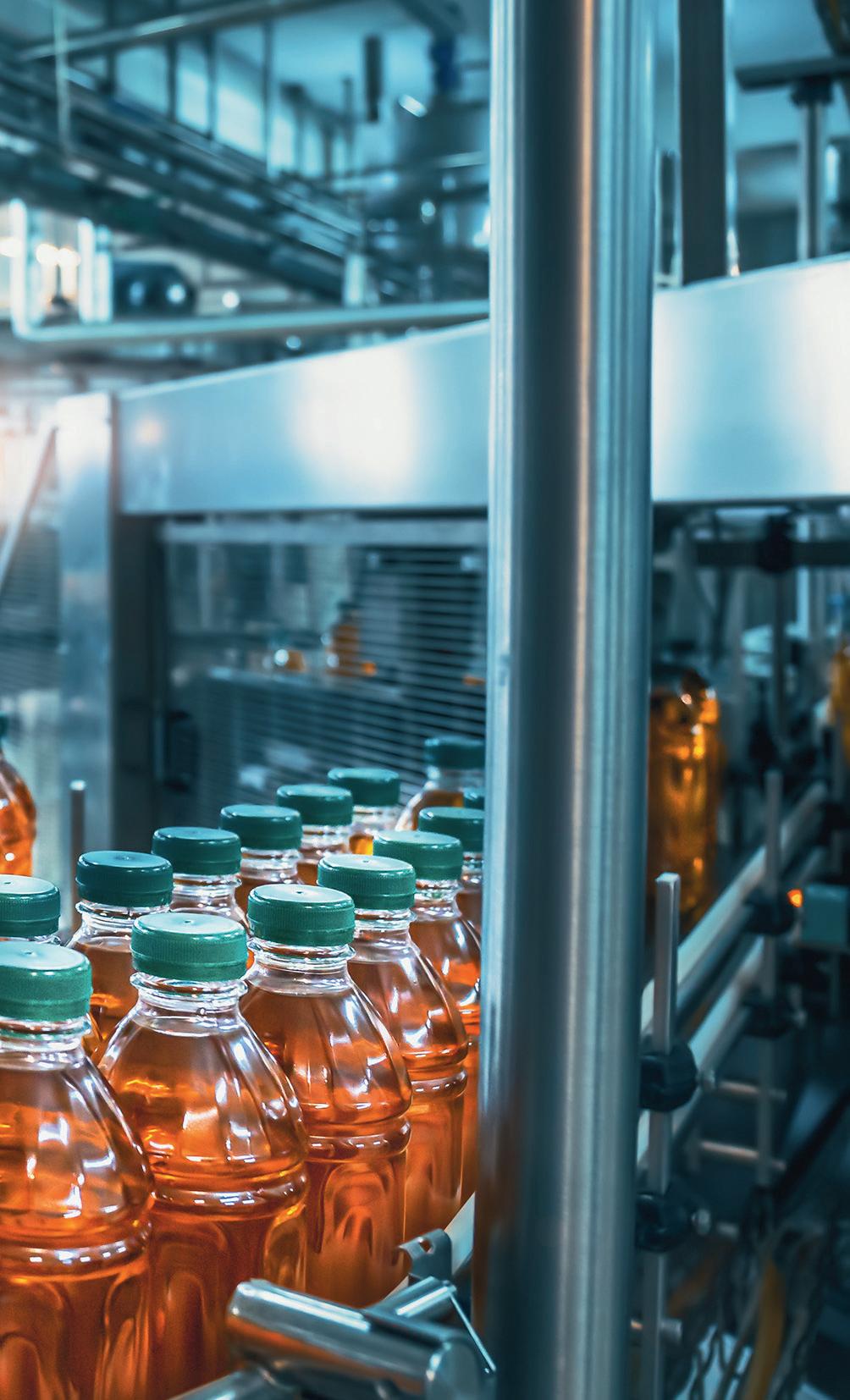
From this, we have outlined below three flooring solutions that comply with this, as well as the areas where each flooring solution should be implemented.
1. Ceramic or quarry tiles
Ceramic or quarry tiles are highly durable and excellent for hightraffic loads. They have good impact resistance and have a long life. They are, however, relatively expensive and require a long duration for installation. The permeable grout also makes cleaning and sanitising difficult, so regular thorough cleaning routines need to be in place to avoid microbe harbourage, and dirt and grease retiring there.
2. Epoxy resin
Epoxy resins have a fast installation time and are durable. High solid epoxies provide good protection against acids and alkalis, but not strong protection against lactic acid, which is essential in dairy production facilities. Epoxies also don’t handle cold or thermal shock conditions very well; however, they do bond well to prepared concrete.
3. Polyurethane cements
especially to lactic acid. They are typically low odour, seamless and easy to clean. Polyurethane cements have greater resilience and elasticity than epoxy resins, making them more resistant to scratching and marring. The elasticity makes this type of floor suitable for freezers where storage temperatures may reach -30°C.
While polyurethane cement systems appear to be the best flooring solution, the other two solutions are suitable in lowerpressure areas of the food manufacturing facility. Please note due to the description of tiles above, Allied Finishes doesn’t offer this product.
Areas in a food factory have been outlined below, with Allied Finishes’ recommendation of flooring solution.
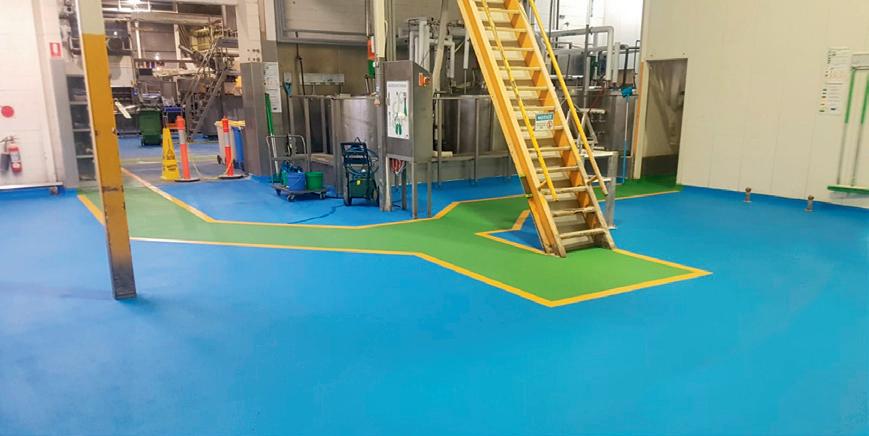
Ingredients storage
Ingredients storage rooms are typically dry areas with minimal foot traffic but some forklift traffic. Understanding this, the floor needs to be durable, but without frequent washdowns as in the production areas, it isn’t under as much stress. Allied Finishes recommends a polyurethane cement flooring solution in a light non-slip for this area. In particular, its SteriFloor Schützend solution is suitable for ingredients storage areas.
Production areas
Production areas present a range of challenges to be considered when selecting a flooring solution. Constant wet conditions, temperature extremes, corrosion with acids and alkalis, and high-pressure hosing put the floor under a lot of pressure. A polyurethane cement system is ideal for this type of area. Allied Finishes recommends its SteriFloor Stärke solution — a hard-wearing food-grade flooring solution available for food and beverage manufacturing facilities.
High-care areas
Many food manufacturing facilities have high-care areas, where maximum hygiene is required. Typically traffic is minimal, but cleaning is frequent. Allied Finishes recommends an epoxy solution, in a stipple finish — its SteriFloor Keimfrei solution is suitable for high-care areas.
Packing halls
With the constant foot and forklift traffic in packing halls, the flooring solution needs to be durable. Standing up against water, acids and alkalis is not a challenge faced in this area; however, due to the durability required, Allied Finishes recommends a polyurethane cement system. In particular, it recommends its SteriFloor Beschützen solution.
Coolrooms/freezers
A change in flooring temperature can cause many flooring solutions to crack, exposing the substrate. Polyurethane cement systems are not as affected by this change; hence, Allied Finishes recommends this solution in a higher build. Its SteriFloor Stärke solution is suitable for coolrooms, as it would not crack with the changing floor temperature.
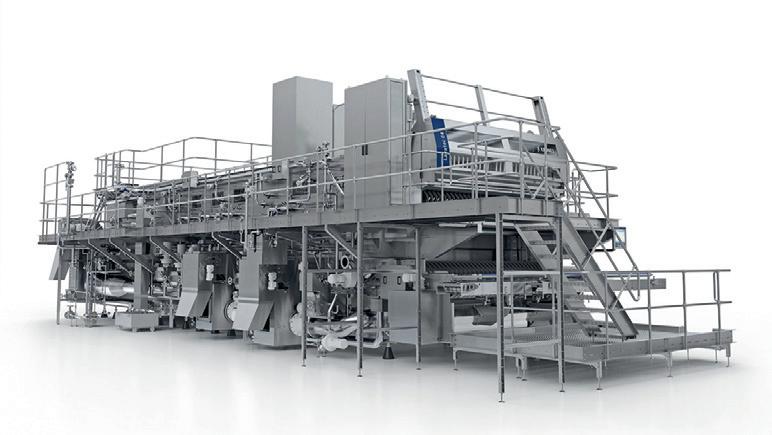
Bottle washers with smart drive system
Krones’ Lavatec series bottle washers feature an updated smart drive system.
The drive system improves the bottle washer’s energy efficiency and total cost of ownership (TCO) using 20% less electrical power than its predecessor while maintenance cycles can be extended by around 20%.
Its gentle bottle handling is enabled by controlled conveyors at the infeed putting less pressure on the bottles. It also features torque monitoring — allowing the infeed curve to be specifically set to match the bottles’ shape and weight.
Independent control of the finger shaft and bottle transfer guides allow for a user-friendly experience while empty bottles are tipped into position before being picked up by the fingers at the infeed to reduce noise.
Krones (Thailand) Co Ltd
www.krones.co.th
Hygienic connectivity interface
The Han F+B hygienic connectivity interface is suitable for the food and beverage industry.
With Han F+B, HARTING has created a range of connectors that are specially designed for the requirements of the food industry. Hygiene and safety are particularly important in food processing. Machines and equipment must be designed so that they are easy to clean; dirt pockets must be avoided.
Smooth surfaces make it harder for bacteria to accumulate. The hoods, housings and seals are robust and protect the internal contacts against hose water and aggressive cleaning agents, which are certified by Ecolab and have FDA 21 approvals. The water jet from high-pressure cleaners cannot penetrate the hoods/housings when closed.
Other features and benefits include: easy-to-clean design especially for the spray zone; reliable connections, even with daily cleaning; protection against water jets and aggressive cleaning agents; reduced downtimes and outages; quicker replacement of defective components and efficient configuration when changing products; and simple and quick installation of machines and facilities.
HARTING Pty Ltd www.harting.com.au
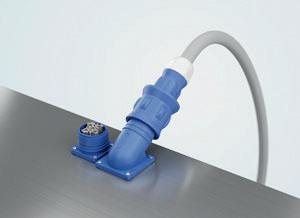
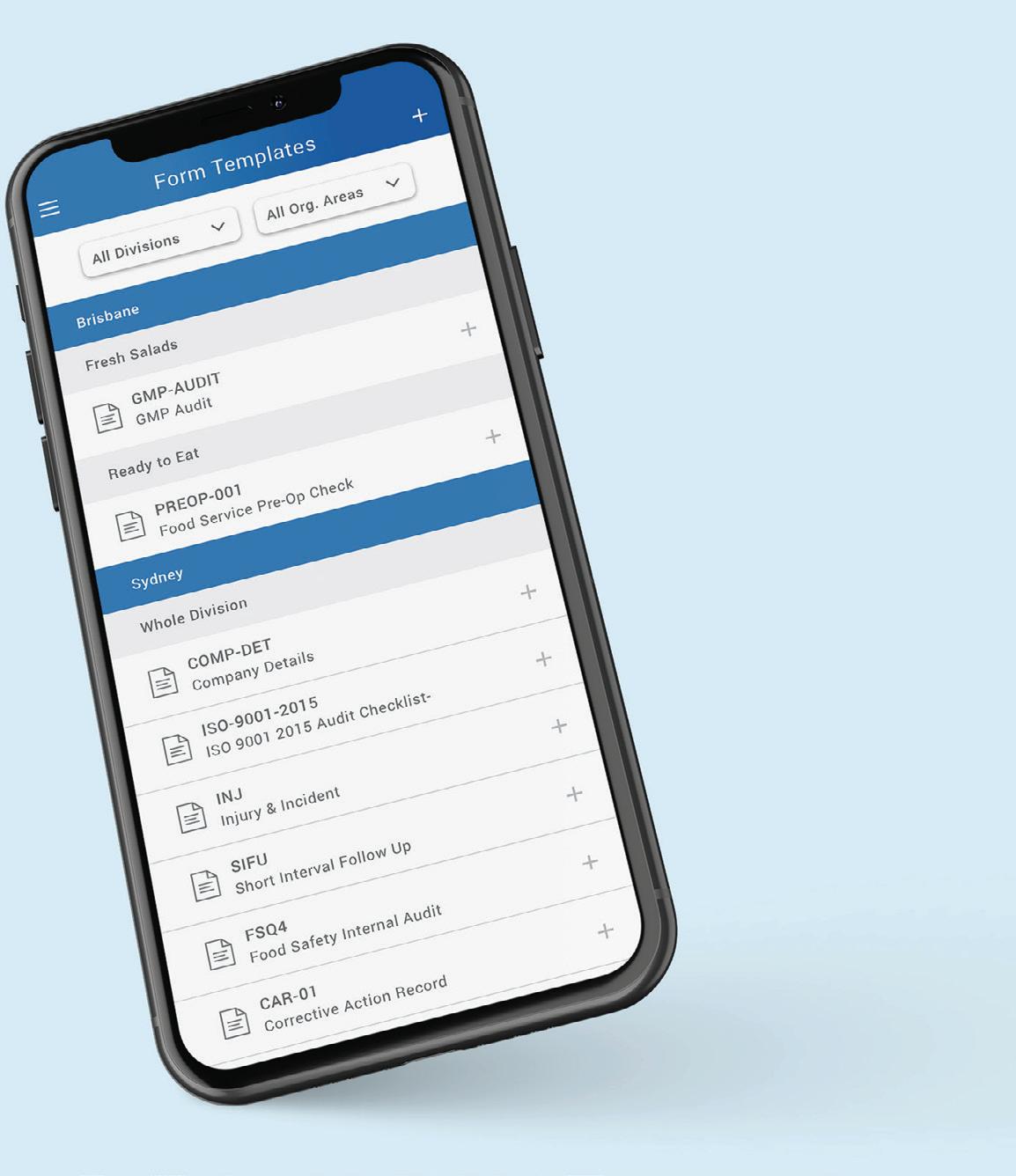
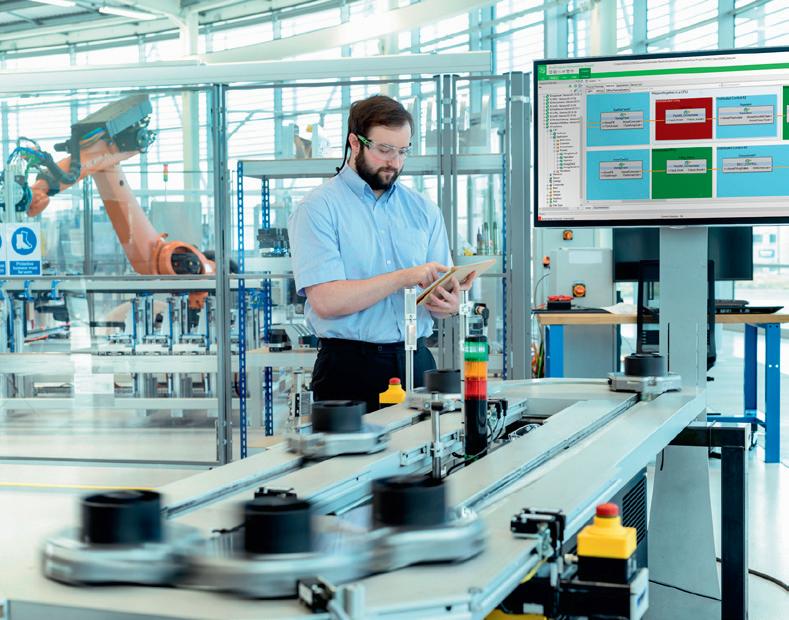
Software-centric automation system
Schneider Electric has released version 21.1 of EcoStruxure Automation Expert, its software-centric universal automation system. The technology is suitable for adoption by, for example, consumer-packaged goods, pharmaceutical and logistics enterprises.
By separating the hardware and software life cycles, the system enables automation applications to be built using asset-centric, portable software components, independent of the underlying hardware infrastructure. This softwarecentric approach is designed to deliver cost and performance gains and allow engineers to innovate by automating lowvalue work and eliminating task duplication across tools.
For example, the system has been used in one application to simplify the integration between operational technology (OT) and information technology (IT) to provide fast time to market and flexibility for food and beverage and pharmaceuticals industry applications.
Because the software is decoupled from the hardware, modifying the conveying line to adapt as flow requirements change can be easier and more cost-effective. Identifying the root cause of failure and troubleshooting is claimed to be four times faster using the automation system, with 45% less products on the error line and throughput increased by 5.3%.
Among other advancements, EcoStruxure Automation Expert V21.1 includes enhanced cybersecurity, diagnostics, discovery and commissioning features; and expanded libraries and language support.
In addition, improved integration with AVEVA System Platform allows users to take advantage of AVEVA’s software for supervisory, enterprise SCADA, MES and IIoT applications with minimal engineering overhead.
Industrial developers can create their own software components and solutions based on the IEC61499 standard, which can easily interoperate with EcoStruxure Automation Expert.
Schneider Electric
www.se.com/au
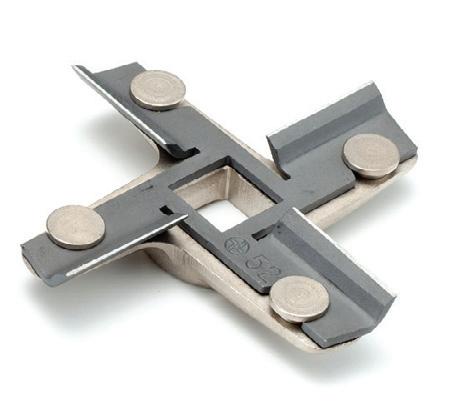
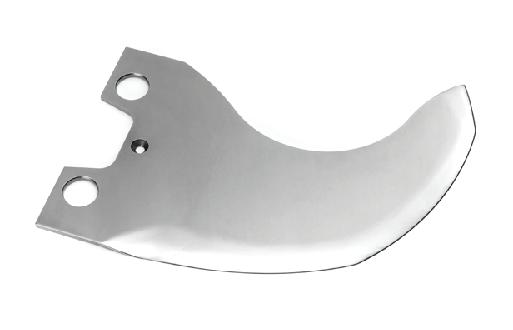
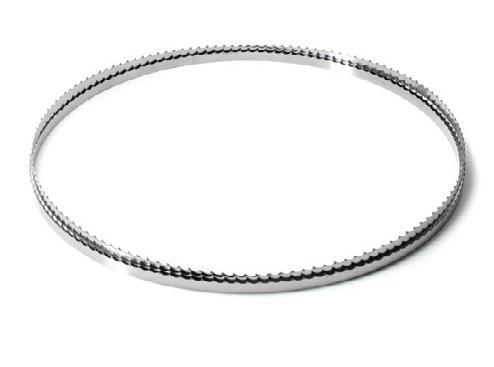
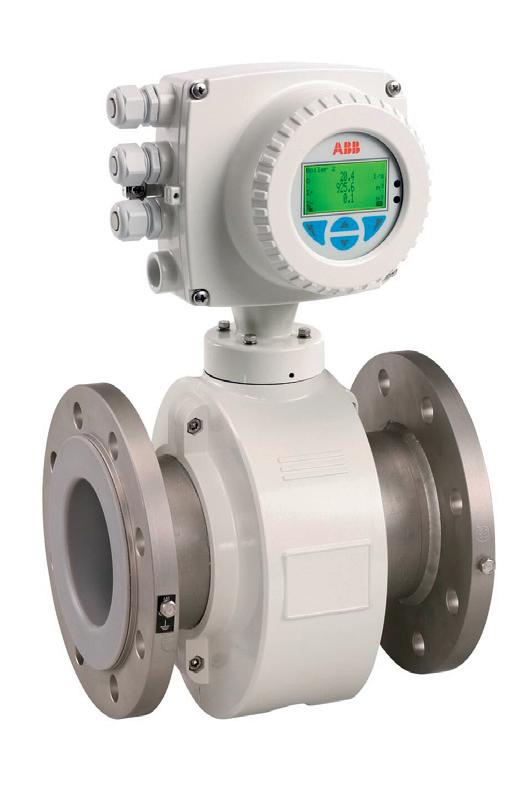
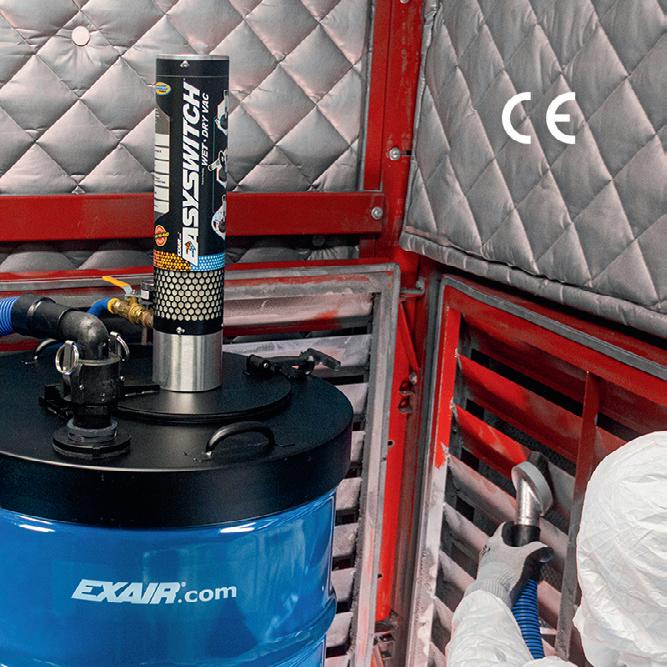
Industrial wet/dry vacuum
EXAIR’s EasySwitch HEPA Wet-Dry Vac simplifies the filter change process when switching from vacuuming a dry material to a liquid or vice versa.
Using minimal compressed air, the EasySwitch is a pneumatic vacuum that is designed for many applications, including wet, dry, light and heavy. This vacuum uses a HEPA certified filter when vacuuming dry material.
The tool-less conversion to vacuuming liquids is done by releasing one latch, removing the filter element and securing the latch. Simply reinstall the filter into the lid assembly for dry materials. It is designed to handle industrial clean-up jobs and it rests on any 205 L drum.
Compressed Air Australia Pty Ltd
www.caasafety.com.au
PoE flowmeters
ABB has incorporated power supply through Ethernet connectivity on board its electromagnetic flowmeter ProcessMaster and mass flowmeter CoriolisMaster.
Power over Ethernet (PoE) omits the need for a separate DC power infrastructure, providing power and communications via the same cable. This brings new agility as flowmeters can be installed wherever needed. In addition, ABB 4-wire Ethernet combines classic outputs with future communication protocols. Offering a modular design allows the combination of both worlds and helps ensure that devices are futureproof, increasing the longevity of the flowmeters.
Flowmeters with Ethernet connectivity increase simplicity, flexibility and reliability for operations in process automation, while enhancing real-time visibility of data. Previously hidden data in field devices, such as measurement values on density, conductivity or concentration of the medium, can be made available. This in turn will help users identify redundant measurement points in their plants to achieve savings along the way.
Combining 4–20 mA or digital outputs with new 1- or 2-port Ethernet helps makes classic instrumentation futureproof, with speeds of up to 100 m/s. The flowmeters use various Ethernet-based communication protocols, such as simple Modbus TCP or EtherNet/IP. This prepares them for IT/OT convergence, cloud connectivity and the requirements needed for secure and encrypted communication in the near future.
Ethernet connectivity for the ProcessMaster electromagnetic flowmeter is currently available in North America, and will be released globally later in 2021.
ABB Australia Pty Ltd
www.abbaustralia.com.au
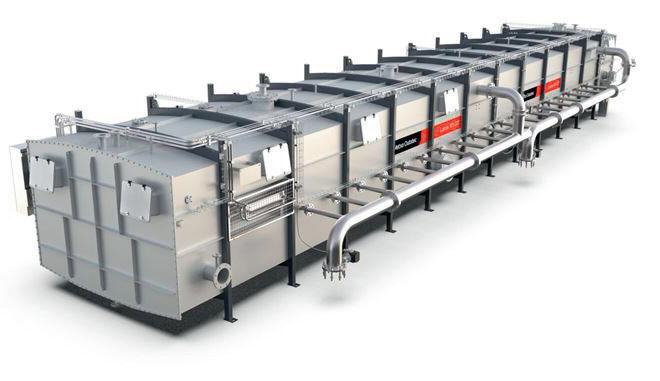
Filtration solutions for the industrial segment
Metso Outotec is introducing its range of filtration solutions for the industrial segment, covering, for example, chemical processing, industrial minerals, rubber and plastic, food and pharmaceutical, as well as different types of bioprocess industries. Metso Outotec’s portfolio for the industrial segment includes a range of models for various capacities, all designed for easy maintenance and consistent results under varying process conditions. The Larox brand, of which Metso Outotec is the sole owner, is used for selected filters and related services.
As a core feature, the filtration solutions feature a sustainable design to improve environmental performance through energy, emissions and water efficiency. They also comply with the relevant safety standards, are easy to operate and maintain, and are equipped with automated features to support advanced process optimisation and remote support.
Metso Outotec
www.mogroup.com
India produces around 5 million metric tonnes of ghee every year and it is claimed to be the second-largest, milkbased product consumed in India after curd.
GEA has now created a bespoke ghee processing separator that has improved production for Indian milk union Amul Dairy.
The serum separator has reduced fat losses by 85% and increased ghee production by 30% with no additional investment in the already existing plant.
“GEA’s custom-designed centrifuge has transformed our Ghee production,” said Amit Vyas, Managing Director of Amul Dairy.
“After installing the GEA separator, we were able to dramatically reduce our fat losses — from 2% down to 0.3% in the serum part — while increasing ghee production capacity by almost 30%. We achieved our ROI in less than a year, with the added benefit of improved safety, hygiene and energy efficiency.”
The GEA team worked closely with Amul Dairy to develop a bespoke solution, taking time to understand the nature of the process.
Thomas Veer, Product Manager Sales, Separation and Flow Technologies Division at GEA, said: “Amul’s previous ghee production unit had a conventional pre-stratification set-up which resulted in high-fat losses on the order of 2%. With thousands of litres of butter melted every day, the 2% fat loss significantly impacted their bottom line. The traditional set-up also posed operational challenges and was problematic with regard to safety, hygiene and energy consumption.”
With a capacity of 3000 L/h, the new separator allows Amul to bypass the conventional pre-stratification set-up and scale up its production to generate an additional volume of six metric tons per day with no additional equipment or investment in the plant.
Amul Dairy’s new installation has also reduced the load on its effluent treatment plant (ETP).
GEA Australia www.gea.com
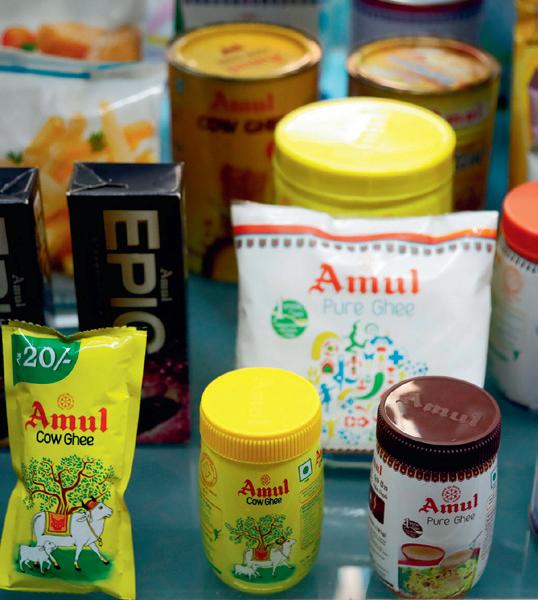
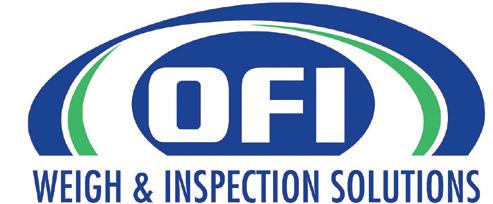
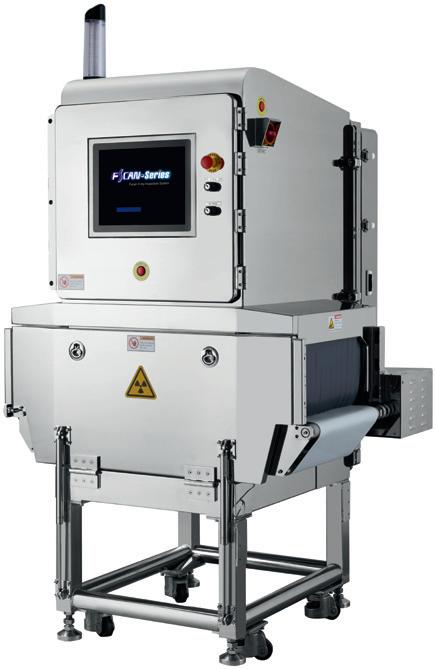
X-RAY BONE DETECTION
The XAVIS FSCAN 4350 is the
latest x-ray from the Xavis Group for Chicken and Fish Bone detection.
The Fscan software utilizes a deep-learning algorithm to maximize the detection of bones. The machine is easy to use and rated for the most rigorous environments. The IP69K protection coupled with 316 grade stainless steel construction will ensure your investment in the 4350 will be realized for many years.
Target products
• Fish, chicken, turkey, duck meat and goose meat • Fresh and cooked • Fillets, butterflies, tenders, thigh/leg, trim, nuggets, mixed and ground poultry meat • Wish bones, fan bones, rib bones etc. • Maximum product height 70 mm
Expected inspection results
≤ 99% of accuracy of 2.0 mm of bone in raw chicken breast
Other contaminant detection
1.0 mm metal, 2.0 mm stone, 2.0 mm glass
Protection
IP66 with IP69K optional
Combination Systems
Rejection system Checkweigher Grading system
For more information, please contact our office on 1300 989 079 or email: sales@ofiinspection.com.au

©stock.adobe.com/au/fedorovacz
Program to ship fresh hops globally developed
Fresh hop craft beer has been growing in popularity across the US. Brewed with whole wet cones within 36 hours of harvest, the beer is designed to represent hops in their most natural form. However, with the high perishability of an unprocessed ingredient, fresh hops are difficult to access for brewers further from the farms.
Yakima Chief Hops (YCH) has now launched a frozen fresh hops product, which could help brewers access fresh hops and bring fresh hop craft beer to the world.
In partnership with Wyckoff Farms, YCH’s Frozen Fresh Hops program is designed to ship raw, un-kilned, flash-frozen whole cone hops produced in a BRC-certified food processing facility.
Unlike traditional freezing, flash freezing is designed to retain the delicate nuances of un-kilned hops by protecting lupulin gland integrity, preserving fresh hops from both a physical and aromatic perspective.
YCH claims this results in a product that delivers better storability and logistical flexibility.
The Frozen Fresh Hops have sub-freezing shipping and storage requirements.
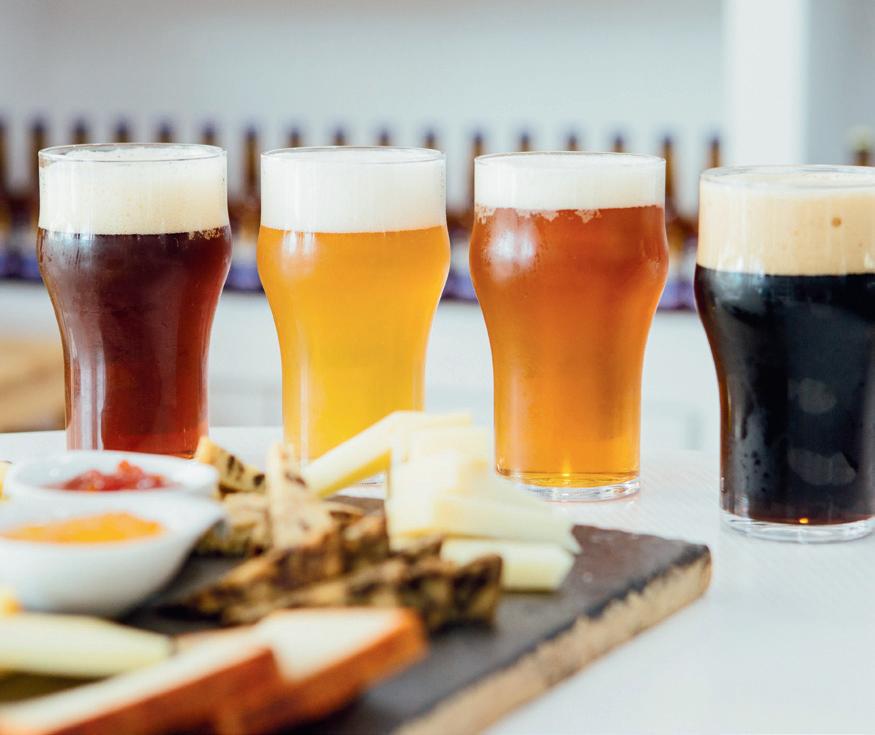
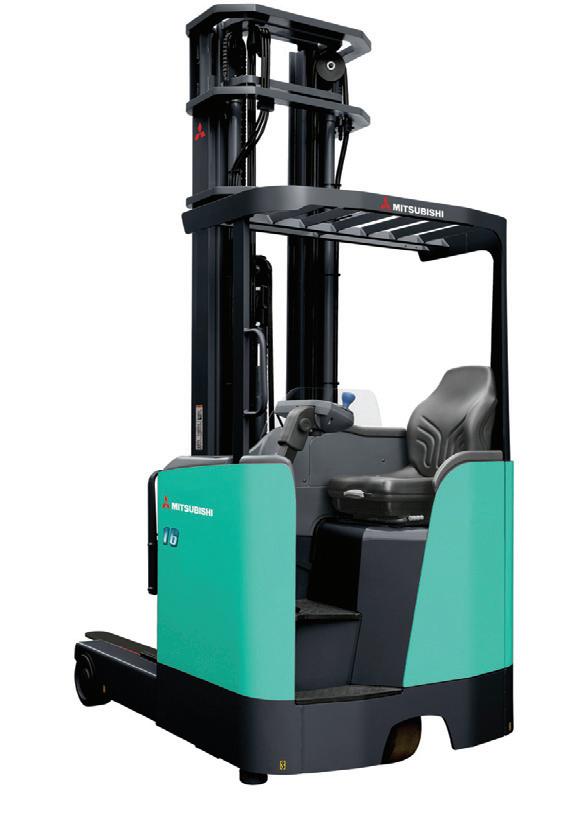
Sit-down reach truck range
MLA Holdings has released the RBF14-16-20CA series sit-down reach truck range, which adds to the range of warehouse products from Mitsubishi.
Available in three models, each is powered by a 48 V traction battery. The 1.4, 1.6 and 2.0 ton models all use AC motor technology for greater power efficiency and lift heights of up to 10.5 m.
Features include safety, good control system and smooth operation.
The Operation Interlock System deactivates travelling when the operator is not seated. Furthermore, a Neutral Safety feature prevents sudden movement should the accelerator or hydraulics be accidently activated, while a sensitive lift speed control automatically slows lifting and steering when truck is above a certain speed. Direction control, horn and emergency stop button are located ergonomically on the armrest console.
Additional safety features include: colour cameras; blue safety lights; red halo perimeter lights; laser pointer; drive-in racking; side shift with fork positioning; single point battery watering system or maintenance-free batteries; speed limiting; and load weight indicators or digital weight scales.
An optimised operator experience is ensured by the SICOS-AC control system that integrates the hydraulics, travelling and steering functions. Also integrated is a self-diagnostic function that constantly monitors for malfunctions. Any faults discovered are communicated via diagnostic codes making it easy to identify the problem and rectify.
AC motor technology delivers a smooth, powerful drive and low maintenance costs. A regeneration function charges power back to the battery through plugging, coasting and braking to ensure longer operating hours from one charge.
Integral side shift is a standard feature, while steer by wire 360 degrees steering means there is no need for switch back, to ensure effortless steering.
MLA Holdings Pty Ltd
www.mlaholdings.com.au
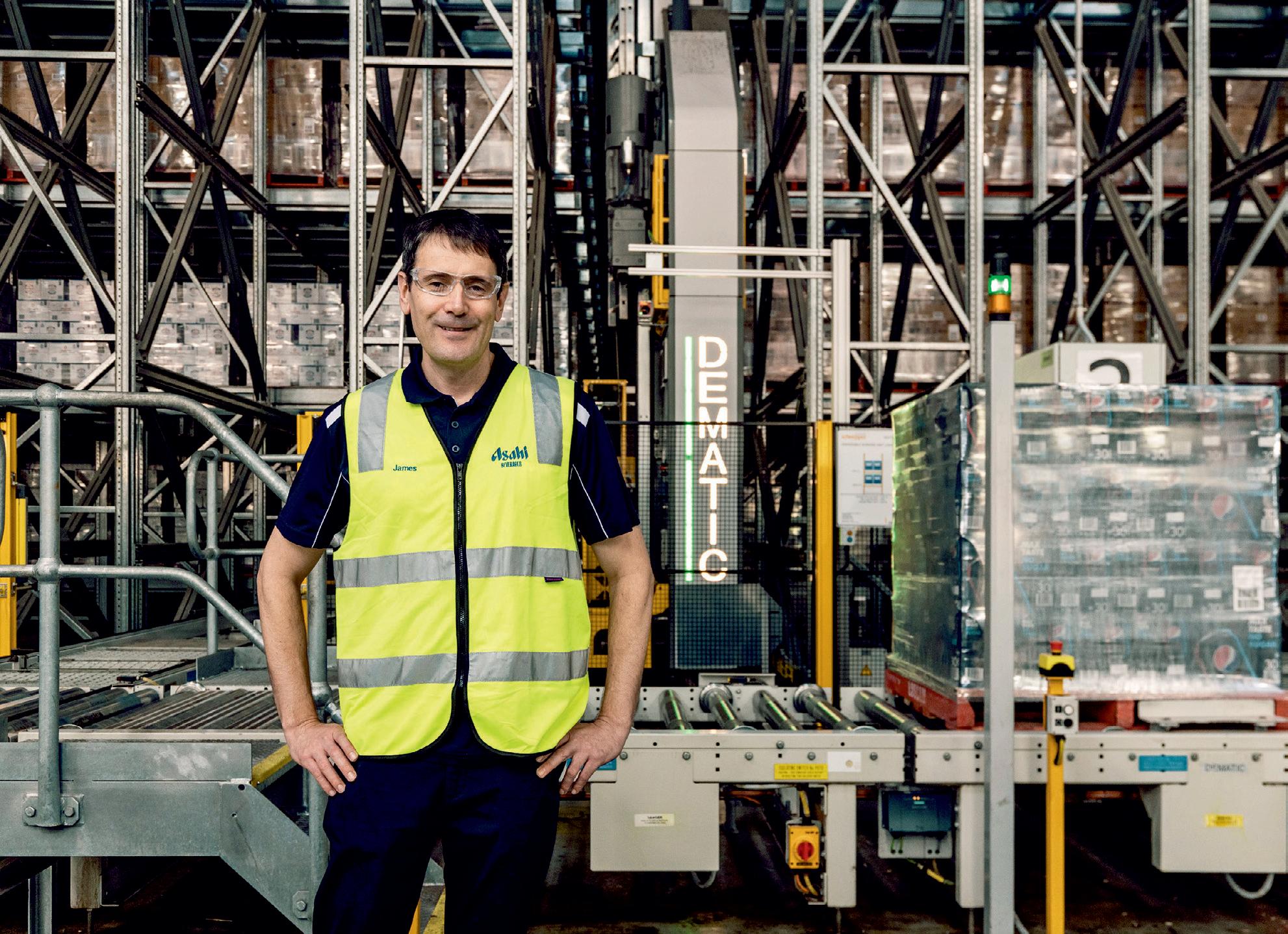
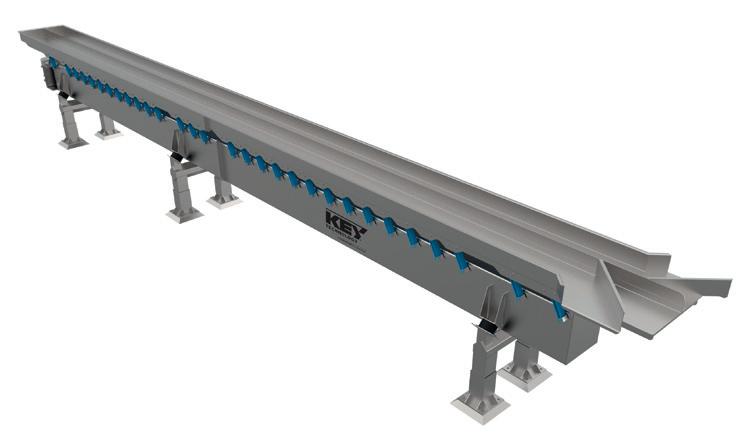
Vibratory conveyors with monobeam construction
Key Technology introduces its Marathon vibratory conveyors with monobeam construction. Featuring a narrow frame that’s less than half the surface area of traditional Marathon frames, monobeam shakers can provide better access to the conveyor bed and fewer parts to clean.
Designed for processors that require a high degree of equipment hygiene and/or a small footprint, the conveyor is suitable for a wide range of bulk food applications — from raw receiving to packaging, including product collection, transfer and distribution.
Unlike a traditional shaker, which has a frame and spring arms on both sides of the conveyor bed, monobeam conveyors position the frame and spring arms underneath the bed to maximise sanitation while improving operator access and safety.
All Marathon conveyors, including the monobeam models, use natural-frequency vibratory motion to distribute bulk foods long distances on a single unit. The conveyor can replace several shakers in a row, relying on only two independent, frame-mounted drives to improve efficiency and reliability. Additionally, fewer supports to the floor eases cleaning and sanitation. Two foot-mount, self-synchronising motors transfer the force of the frame to the bed without mechanical joints to further improve efficiency, reduce maintenance and minimise downtime. Each conveyor is tailored using predictive modelling and Finite Element Analysis to define the product characteristics and deliver good performance.
Available in lengths from 9 to 15 m and widths from 50 to 100 cm, the monobeam conveyor can achieve conveying speeds greater than 15 m/min, depending on the application. The conveyor bed can be tilted to draw product to one side, and flow direction can be controlled with optional side outlet diverters. It can be built with end-mounted drop-out gates, diverters, end-mounted screens and covers when needed.
In addition to the sanitation enhancements from its monobeam construction, the conveyor has a variety of sanitary advantages. Its stainless steel conveyor bed features a standard rotary polish within the product contact zone, which resists bacterial attachment and biofilm formation. Oil-free drives, elastomeric isolators, scalloped flat bars (if requested), internal ground arms and minimal laminations maximise equipment hygiene and help meet rising sanitary standards and regulatory requirements. The monobeam frame is sloped to prevent product and moisture build-up that can harbour bacteria.
Available in four different finishing standards, the conveyor’s rotary vibratory drives are available in either stainless steel or food-grade epoxy finishes. The unit is suitable for fruits, vegetables, potato strips, potato chips, nuts, meat, poultry, seafood, dairy products, confections, snacks, cereals, grains, seeds and more.
Key Technology is exclusively distributed by Heat and Control in Australia.
Shipping desiccant
The Absorpole from Absortech Groups is a carbon-neutral shipping desiccant.
A 60% reduction in the product’s carbon footprint has been achieved through the use of recycled plastics and the removal of dyes to ease the recycling process and reduce production processes. Unavoidable carbon emissions are offset via gold standard projects of sustainable development. The carbon-neutral status of the desiccant has been achieved with no change to its performance and installation.
The dessicant uses calcium chloride to absorb moisture from air, up to 150% of its weight (1.8 L). Calcium chloride at the top of the unit absorbs moisture from the surrounding air. The calcium chloride gradually dissolves into brine and is captured into a collector. Once captured, the moisture will not re-evaporate into the air.
Fully extended, the unit measures 1180 x 116 x 35 mm and weighs 1.5 kg. It is designed to occupy minimal container space sitting within the corrugated recesses of container walls, attached to the container’s lashing rings. It is particularly suitable for tightly packed containers that allow at least 5 cm space between cargo and desiccant unit. Rigid casing protects the unit from rupturing.
The unit is suitable for use alongside the transport of agricultural products, textiles and leather products, wood and paper, electronics and machinery.
Protection Experts Australia
www.pro-ex.com.au
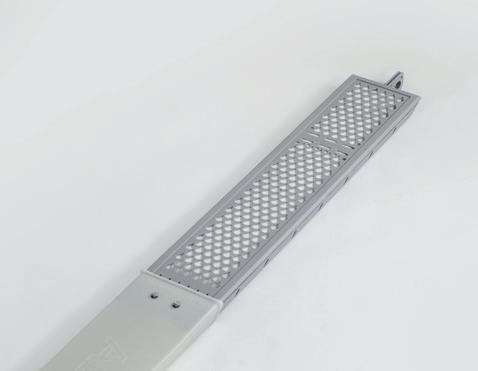
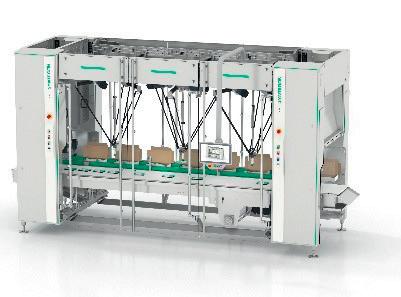
Robotic pick-and-place platform
Syntegon RPP is a robotic pick-and-place platform that automates process steps such as handling, feeding and loading. It’s modular design allows individual configuration of the robotic cells. It also means the platform is scalable and can be used to automate a diverse range of systems.
The stainless steel robotic cells meet the IP65 protection class. This minimises the risk of contamination for both current and future hygiene requirements in the food industry. It also features a tool-free format designed to allow manufacturers to process different products on the same line and to reduce downtime.
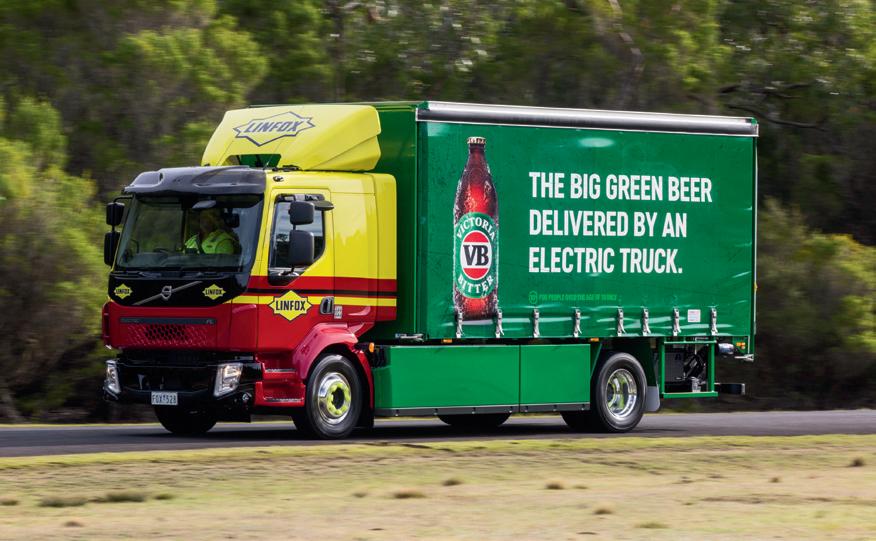
Victoria Bitter has announced it will use an electric vehicle (EV) for deliveries across Melbourne. The Volvo FL all-electric truck will be the first of many Linfox electric vehicles that deliver Victoria Bitter.
More than 100,000 cans and stubbies will be transported by the electric truck each week from Asahi Beverages’ distribution centre in Melbourne’s west to bottle shops across the city.
The truck will be powered entirely by 100% offset solar power drawn from Asahi Beverages’ solar farm near Mildura in northern Victoria. The truck is the latest sustainability initiative from VB, which has been brewed with 100% offset solar electricity since last year.
Robert Iervasi, Group CEO of Asahi Beverages, which purchased Carlton & United Breweries last year, said Linfox has delivered VB for more than 50 years. “It’s
NEWS
Electric truck for VB beer deliveries in Melbourne
fitting these two Australian icons are taking this major step towards a sustainable future together. This truck will deliver VB and our other beers in a sustainable, safe and efficient way, which makes sound commercial sense.
“Transitioning our deliveries to electric vehicles will help us achieve our ambitious sustainability goals of reducing our net carbon emissions across our entire supply chain by 30% by 2030 and to zero by 2050.”
The VB truck is decked out in VB green and can travel up to 250 km before it needs recharging.
Linfox delivers hundreds of millions of litres of beer annually for Asahi Beverages.
Australia’s domestic freight task has doubled in the past decade and will continue to grow, according to Linfox Executive Chairman Peter Fox.
“To meet this demand, Australia’s road fleet will also grow, and it is essential the fleet does this safely, efficiently and with reduced environmental impact. Together with our customers, we continue our commitment to build sustainable and reliable supply chains for the future.”
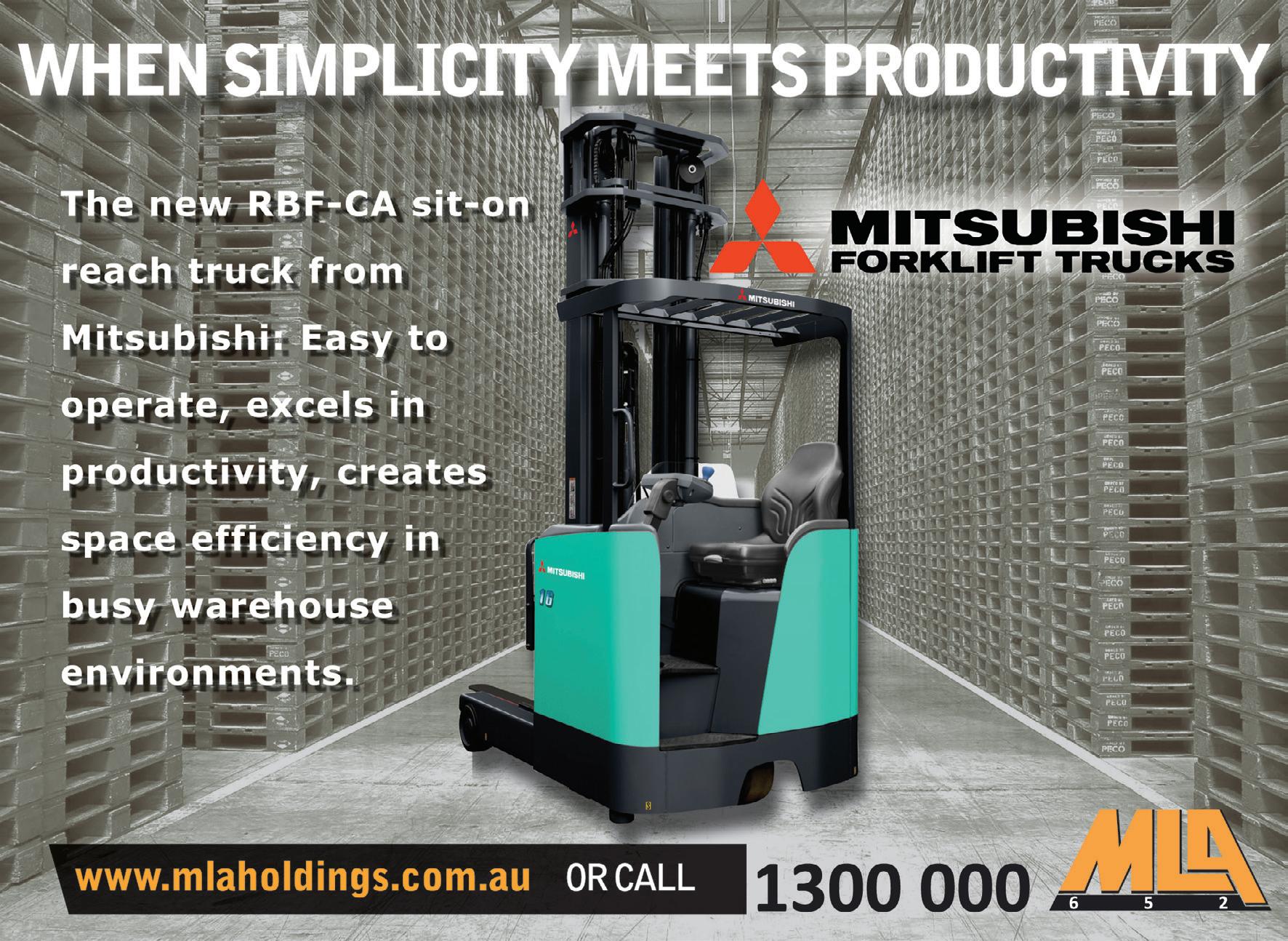
SICK Track & Trace System —
VML dimensioning with perspective
Reliable object detection is essential whenever automated systems are used for object transport. In the courier, express, parcel and postal (CEP) markets in particular, the daily challenge is to deliver punctually and completely. The prerequisite for this is optimum utilization of warehouse and transport capacities.
The VML track and trace system for volume measurement is ideal for these applications: light grids detect the length, width, height and rotation angle of an object. The obtained profiles are used for immediate calculation of the object dimensions and position determination. The surface properties do not affect performance because the VML reliably measures even semi-transparent and film-wrapped objects and determines the smallest enveloping box. This leads to increased efficiency in the downstream packaging and stock placement process and simplifies invoicing for certified systems. The determined rotation angle allows dynamic handling by downstream robot systems. The modular design of the VML system makes it compatible with other SICK solutions and allows it to be easily adapted to individual tasks.
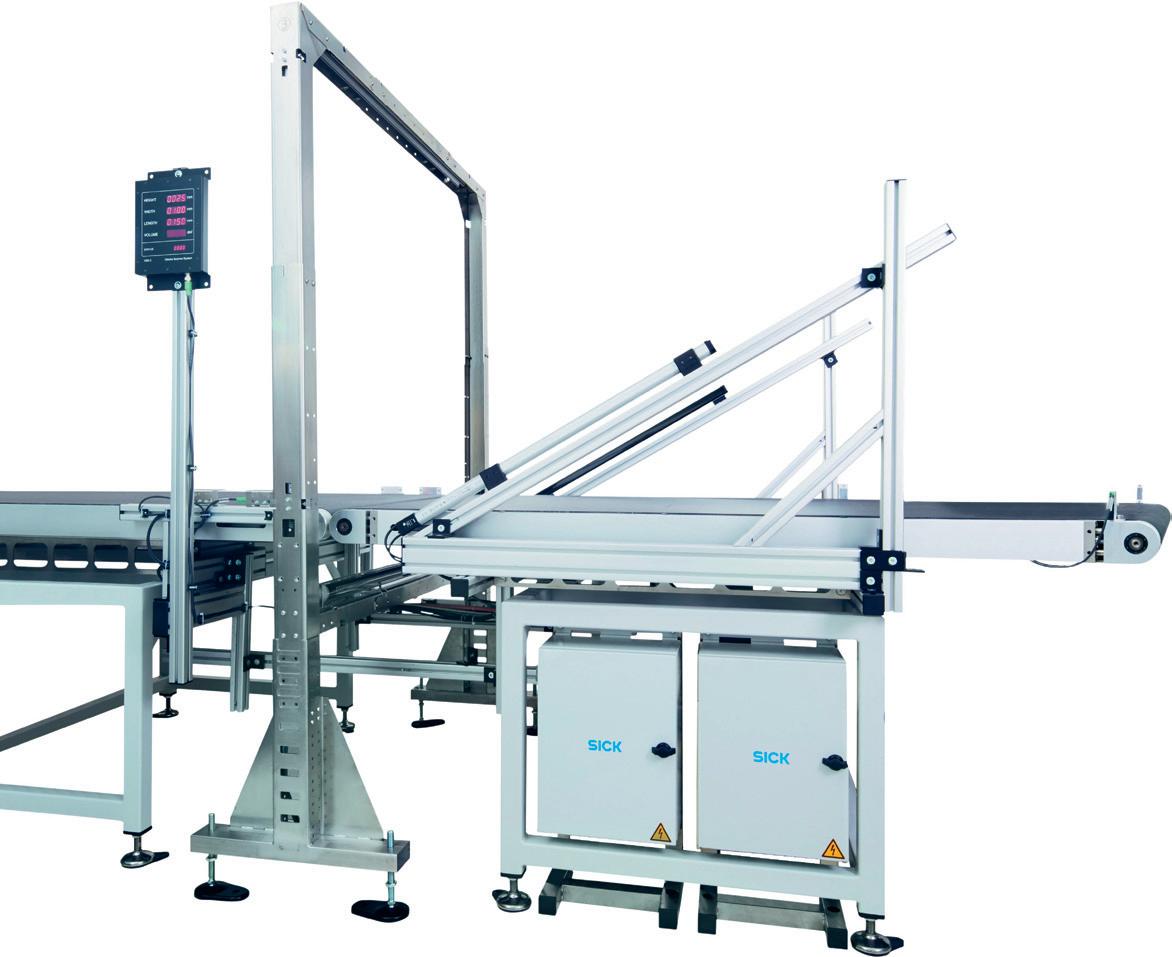
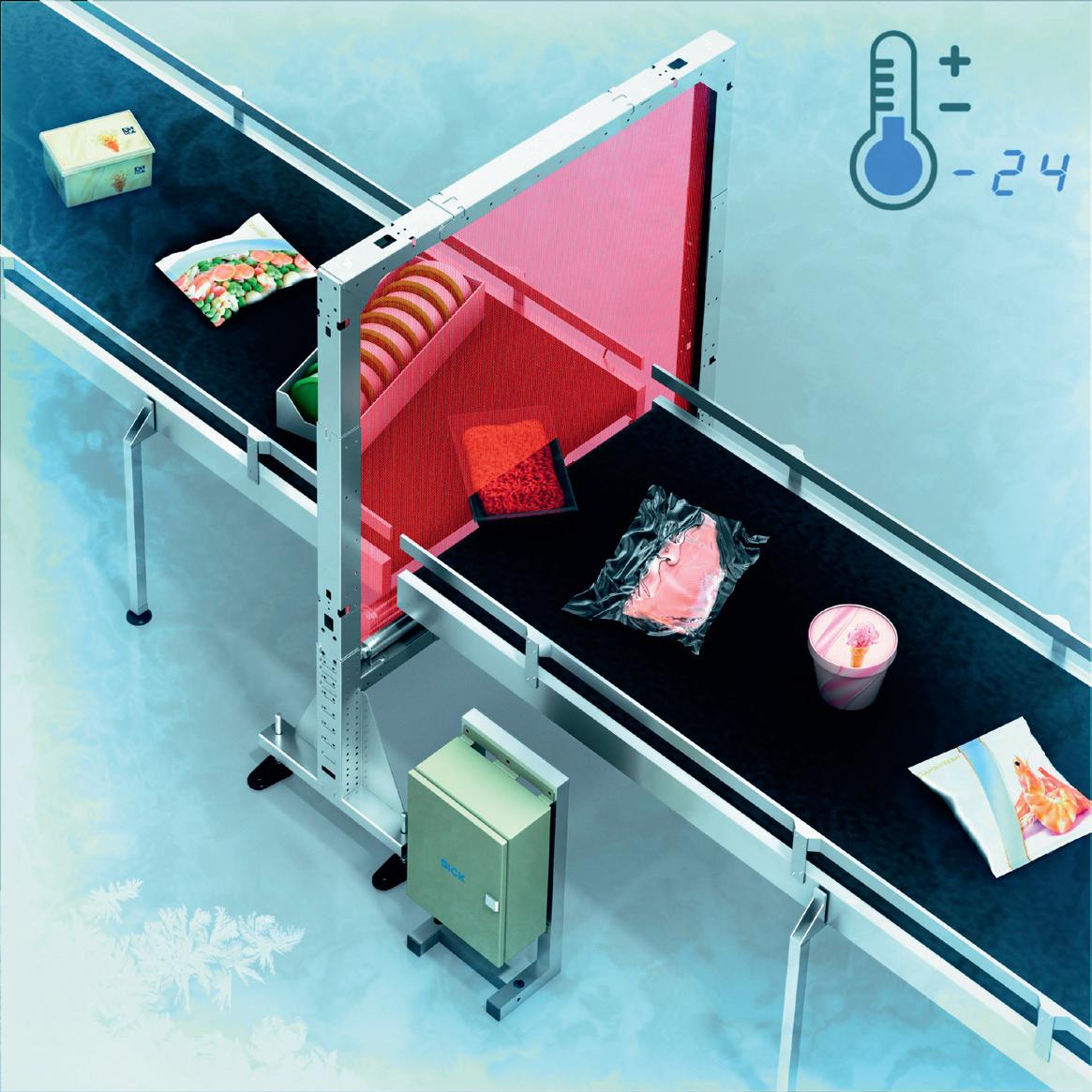
Powerful system for all applications
• Reliable object measurement by light grid technology independently of the surface properties • Easy on-site installation thanks to predefined light grid sizes and adaptable standard steel frame • Low-maintenance operation because system does not contain any moving parts • Easy system expansion and integration thanks to MSC800 modular system controller
System integration in the SICK product range
Identification solutions from SICK feature uniform electric and data connectivity, a standard user interface, and a uniform accessory concept. The devices are also compatible and interchangeable with one another. This compatibility allows flexible selection of technology to ensure that future needs are also met.
The VML track and trace system measures objects completely independently of their surface properties and is therefore suitable for a wide range of applications in the area of object dimensioning and position determination. It meets specific requirements for industrial use, e.g. with respect to ambient light immunity and protection classes, and is also available with different connection and protocol variants. The VML system enables efficient packaging, storage and transport of objects across industries.
SICK Pty Ltd www.sick.com.au










